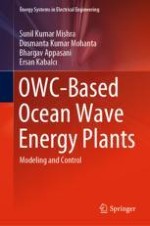2021 | Buch
OWC-Based Ocean Wave Energy Plants
Modeling and Control
verfasst von: Dr. Sunil Kumar Mishra, Prof. Dusmanta Kumar Mohanta, Dr. Bhargav Appasani, Prof. Dr. Ersan Kabalcı
Verlag: Springer Singapore
Buchreihe : Energy Systems in Electrical Engineering
